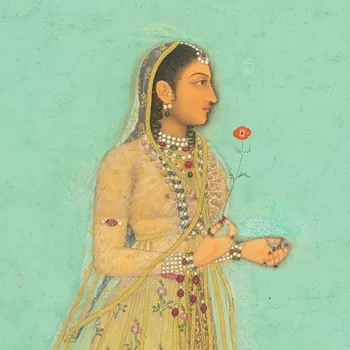Nishan-i Haydari نشان حيدری (The Mark of the Lion / A History of Haydar Ali and Tipu Sultan) 1805
Manuscript written in nastaliq on European laid paper, watermarked with Britannia and crown | 30.8 x 18.3 cm (book measurement (conservation)) | RCIN 1005027
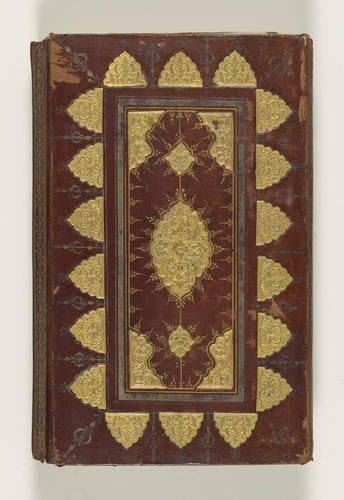
Mir Hussain Ali Khan Kirmani
Nishan-i Haydari نشان حيدری (The Mark of the Lion / A History of Haydar Ali and Tipu Sultan) 1805
Mir Hussain Ali Khan Kirmani
Nishan-i Haydari نشان حيدری (The Mark of the Lion / A History of Haydar Ali and Tipu Sultan) 1805
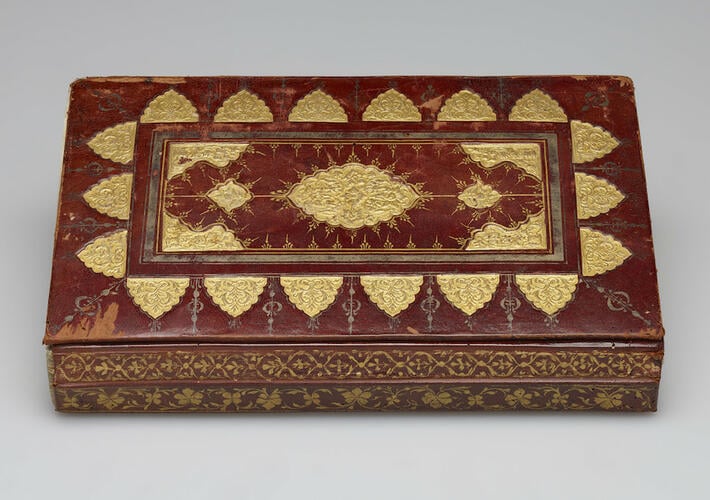
Mir Hussain Ali Khan Kirmani
Nishan-i Haydari نشان حيدری (The Mark of the Lion / A History of Haydar Ali and Tipu Sultan) 1805

Mir Hussain Ali Khan Kirmani
Nishan-i Haydari نشان حيدری (The Mark of the Lion / A History of Haydar Ali and Tipu Sultan) 1805
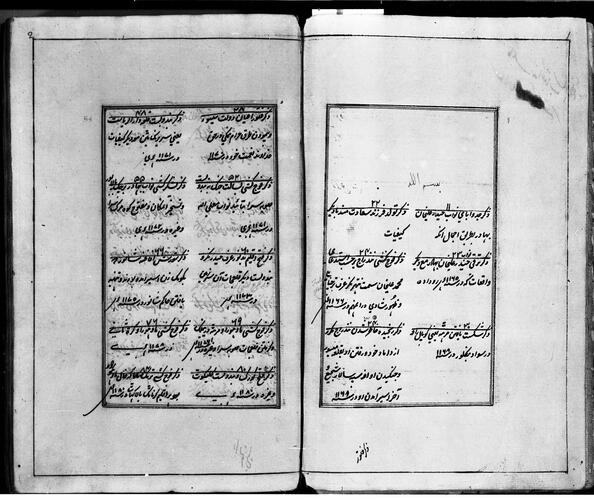
Mir Hussain Ali Khan Kirmani
Nishan-i Haydari نشان حيدری (The Mark of the Lion / A History of Haydar Ali and Tipu Sultan) 1805
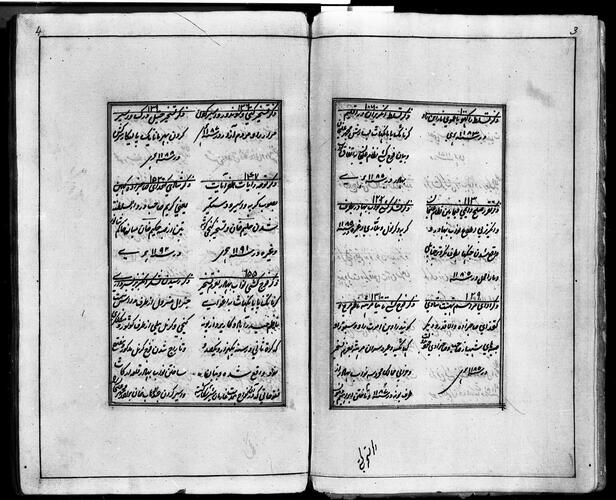
Mir Hussain Ali Khan Kirmani
Nishan-i Haydari نشان حيدری (The Mark of the Lion / A History of Haydar Ali and Tipu Sultan) 1805
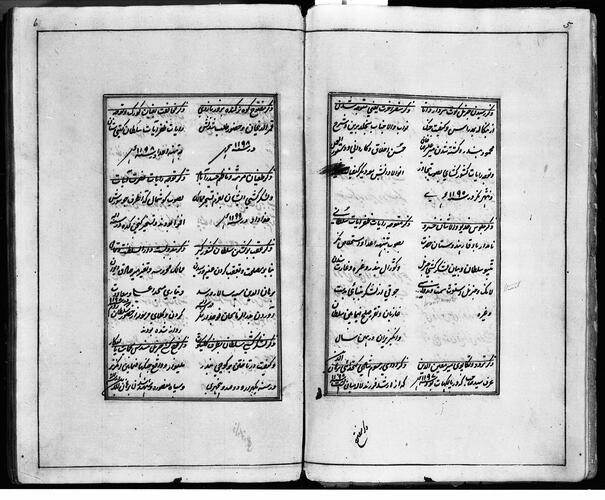
Mir Hussain Ali Khan Kirmani
Nishan-i Haydari نشان حيدری (The Mark of the Lion / A History of Haydar Ali and Tipu Sultan) 1805
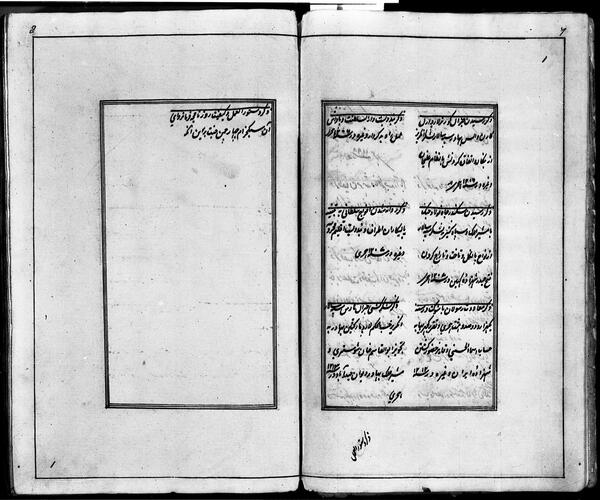
Mir Hussain Ali Khan Kirmani
Nishan-i Haydari نشان حيدری (The Mark of the Lion / A History of Haydar Ali and Tipu Sultan) 1805

Mir Hussain Ali Khan Kirmani
Nishan-i Haydari نشان حيدری (The Mark of the Lion / A History of Haydar Ali and Tipu Sultan) 1805

Mir Hussain Ali Khan Kirmani
Nishan-i Haydari نشان حيدری (The Mark of the Lion / A History of Haydar Ali and Tipu Sultan) 1805

Mir Hussain Ali Khan Kirmani
Nishan-i Haydari نشان حيدری (The Mark of the Lion / A History of Haydar Ali and Tipu Sultan) 1805
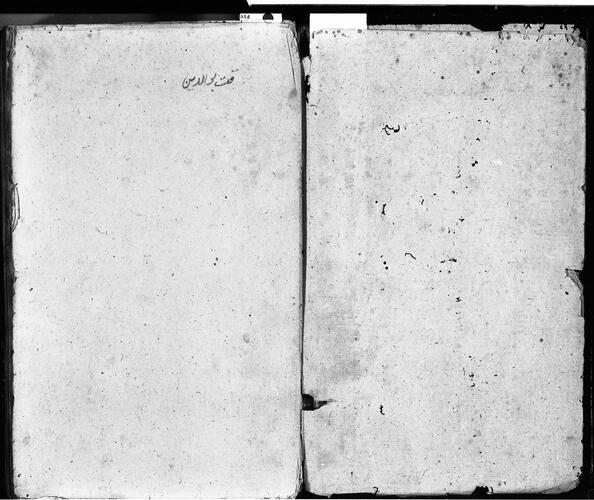
Mir Hussain Ali Khan Kirmani
Nishan-i Haydari نشان حيدری (The Mark of the Lion / A History of Haydar Ali and Tipu Sultan) 1805
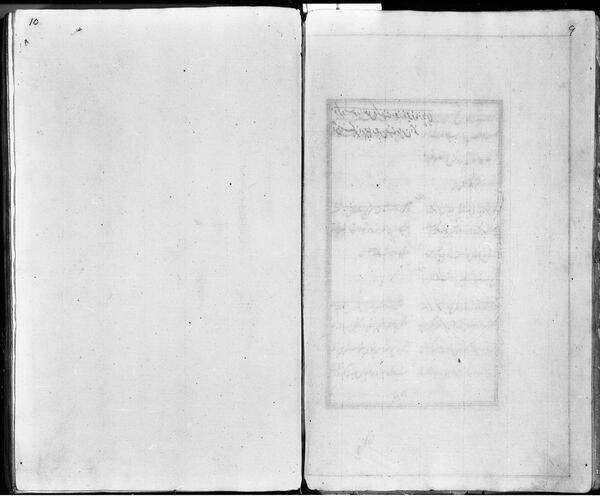
Mir Hussain Ali Khan Kirmani
Nishan-i Haydari نشان حيدری (The Mark of the Lion / A History of Haydar Ali and Tipu Sultan) 1805
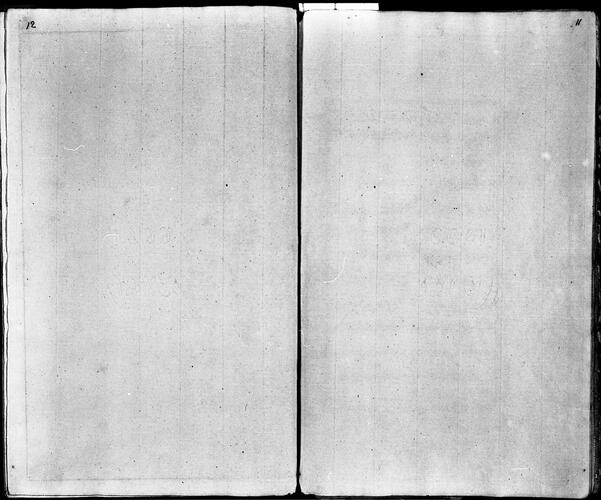
Mir Hussain Ali Khan Kirmani
Nishan-i Haydari نشان حيدری (The Mark of the Lion / A History of Haydar Ali and Tipu Sultan) 1805
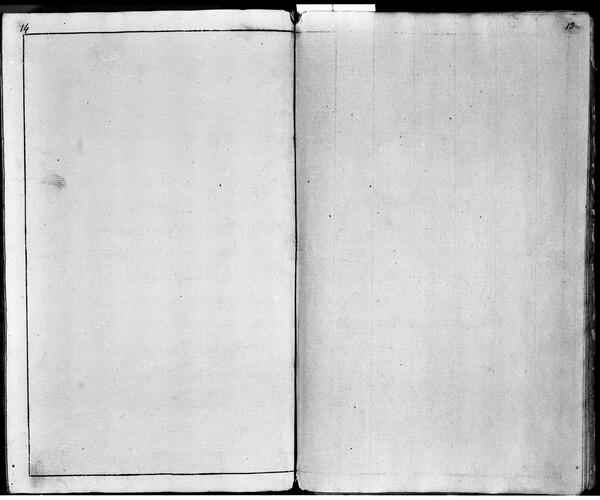
Mir Hussain Ali Khan Kirmani
Nishan-i Haydari نشان حيدری (The Mark of the Lion / A History of Haydar Ali and Tipu Sultan) 1805
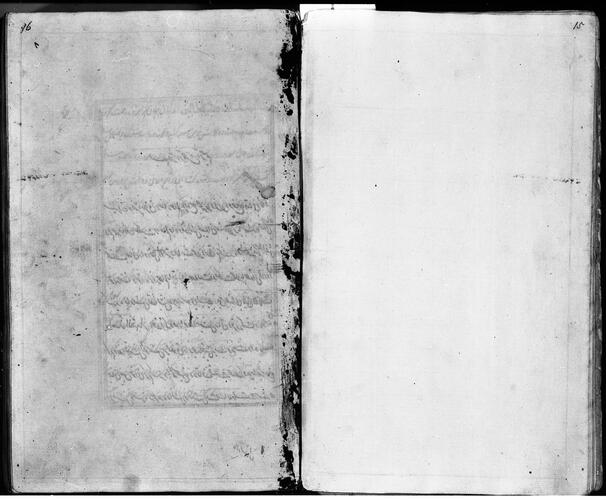
Mir Hussain Ali Khan Kirmani
Nishan-i Haydari نشان حيدری (The Mark of the Lion / A History of Haydar Ali and Tipu Sultan) 1805
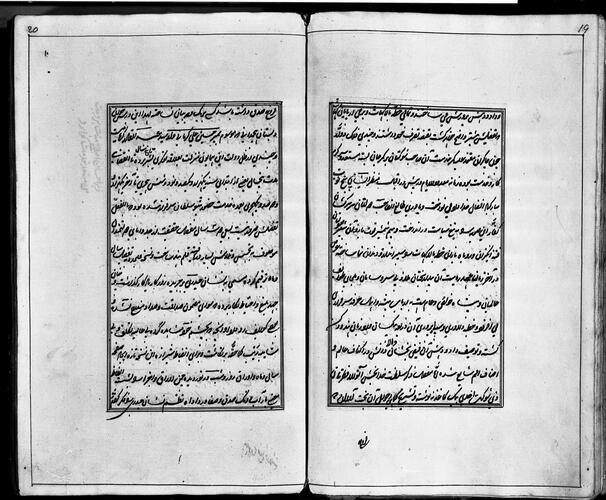
Mir Hussain Ali Khan Kirmani
Nishan-i Haydari نشان حيدری (The Mark of the Lion / A History of Haydar Ali and Tipu Sultan) 1805

Mir Hussain Ali Khan Kirmani
Nishan-i Haydari نشان حيدری (The Mark of the Lion / A History of Haydar Ali and Tipu Sultan) 1805
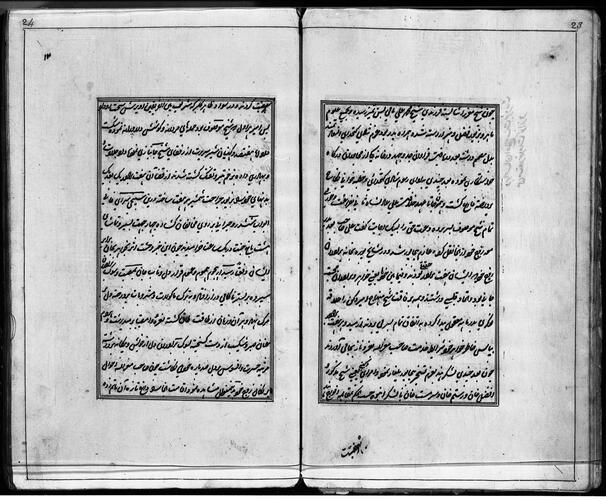
Mir Hussain Ali Khan Kirmani
Nishan-i Haydari نشان حيدری (The Mark of the Lion / A History of Haydar Ali and Tipu Sultan) 1805

Mir Hussain Ali Khan Kirmani
Nishan-i Haydari نشان حيدری (The Mark of the Lion / A History of Haydar Ali and Tipu Sultan) 1805
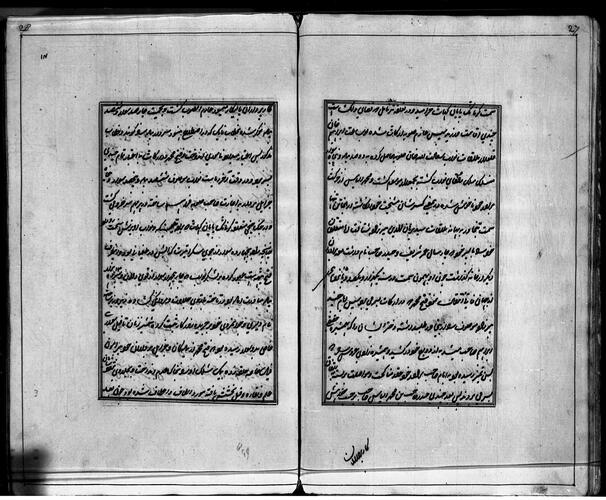
Mir Hussain Ali Khan Kirmani
Nishan-i Haydari نشان حيدری (The Mark of the Lion / A History of Haydar Ali and Tipu Sultan) 1805





















-
A manuscript copy of a biographical history of Haydar Ali and Tipu Sultan written in Persian in 1802 by Mir Hussain Ali Khan Kirmani, an Iranian émigré who had served at Tipu’s court from 1781 to 1786.
After the fall of Seringapatam in 1799, Tipu’s sons and daughters and many courtiers were sent to the nearby city of Vellore where they lived under custody of the East India Company. It was in Vellore that Mir Husayn Ali Khan, also a pensioner of the British, penned this biography of their father and grandfather. Although not written as a commission, the author confidently asserted his ‘hope and trust’ that Tipu’s sons would reward his scholarly labours.
This manuscript copy is dated 17 July 1805 and written in nastaliq script on European paper watermarked with Britannia and the crown. Its binding is of brown morocco, gilt stamped and painted, with an envelope flap. According to obscured inscriptions, it originally belonged to Muhammad Shukrullah Khan Sultan (1785-1825), reportedly Tipu’s favourite son. Shukrullah’s name has been erased from colophon and replaced with that of Jami al-Din Muhammad (c.1792–1842), the twelfth son of Tipu Sultan. Jami al-Din Muhammad moved to Europe as a pensioner of the East India Company in 1832 and presented the manuscript to William IV during a private audience. Later, in June 1835, the young Princess (later Queen) Victoria recorded seeing ‘Prince Jame o deen, son of the famous Tippoo Saib’ at a concert in Kensington Palace, dressed ‘in his oriental attire’.
H.S. Reid used the manuscript to prepare an English translation for the Oriental Translation Fund, published in 1834. A second and better-known translation by Colonel W. Miles was published in two parts, History of Hydur Naik (1842) (RCIN 1051454) and History of Tipu Sultan (1864) (RCIN 1051455). Annotations and notes in pencil, in Persian and English, throughout the manuscript were presumably made while the text was being translated. In the dedications of his publication, Miles asserted that his translations were based on a manuscript in the possession of Queen Victoria. His representation in these texts of Tipu Sultan not as the martyr venerated by his followers, but as ‘a bigoted Musalman’ and ‘a great tyrant’ helped to shape the subsequent portrayal of Tipu in histories of South Asia as a cruel Islamic fundamentalist.Provenance
Formerly owned by Tipu's seventh son, Prince Shakrullah. Later presented to William IV by Prince Jami al-Din Muhammad (c.1792–1842), 12th son of Tipu Sultan, c.1832.
-
Creator(s)
(nationality)(nationality)Acquirer(s)
-
Medium and techniques
Manuscript written in nastaliq on European laid paper, watermarked with Britannia and crown
Measurements
30.8 x 18.3 cm (book measurement (conservation))
Category





